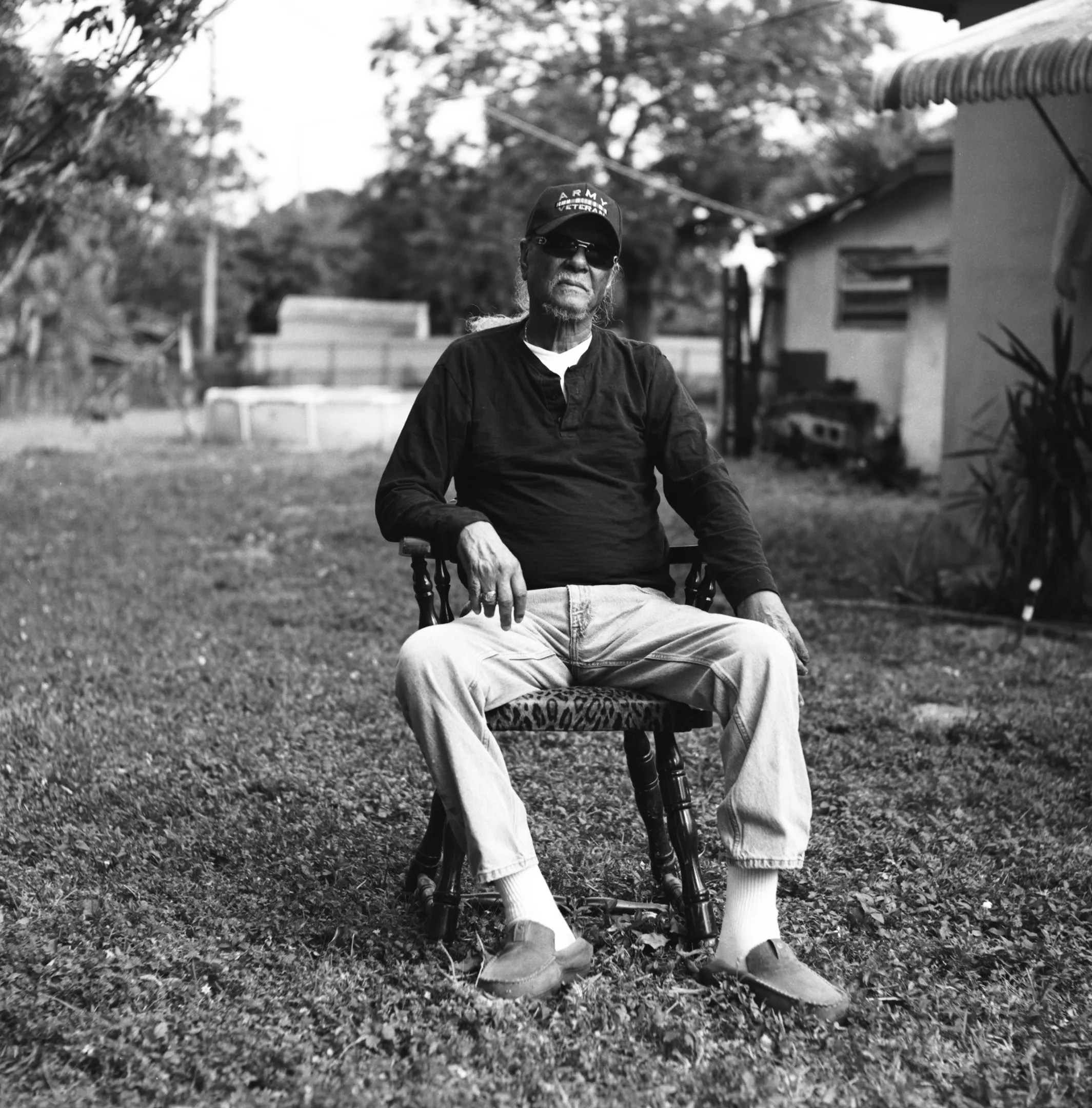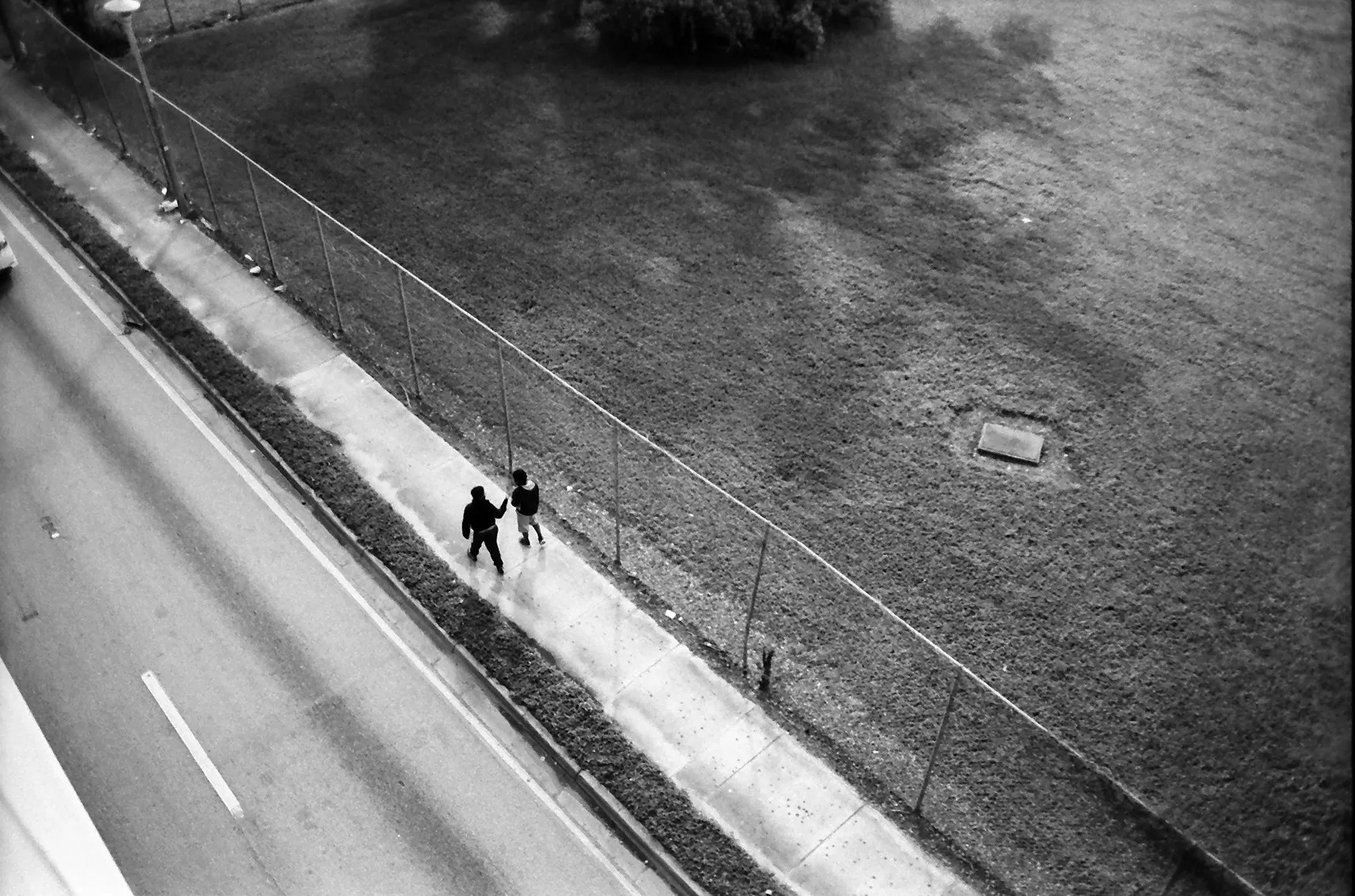
Courtesy of Terence Price

Audio By Carbonatix
Terence Price has a collection of old photographs. One wall of his studio displays a small selection of them carefully hung under the corners of pins so as not to puncture the pictures. On his desk, Ziploc bags and albums full of photos sit next to stacks of VCR tapes. Culled from his parents, aunts, uncles, and maternal grandmother, Price’s collection is a personal family archive stretching back decades.
For his first solo show at ArtCenter/South Florida, “Dancing in the Absence of Pain,” the collection will appear beside the artist’s own practice of street and personal photography.
Asked how his family feels about the show, Price says, “The only thing my grandma is worried about is damaging the photos.”
Price’s shift from documentation of his neighborhood to archival inspiration wasn’t a calculated study of nostalgia or time, but an organic decision born out of loss. After losing his grandfather, the photographer gravitated toward home videos and photos, most of which were taken by his grandfather.
This year, make your gift count –
Invest in local news that matters.
Our work is funded by readers like you who make voluntary gifts because they value our work and want to see it continue. Make a contribution today to help us reach our $30,000 goal!
“As I was documenting and digging through the old photographs, I started to find some footage of myself and my grandfather talking about how I’m so into the camera every time he brings it out,” Price reflects. “Me being surrounded by the camera and him recording all these family gatherings led to me taking pictures.”

Delquan on 170th (2018) by Terence Price: Black-and-white digital print, 30-by-20 inches.
Courtesy of Terence Price
This becomes clearer on the opposite wall of Price’s studio, covered primarily with his own work. Some of the photos are of his family and others of strangers, but it’s difficult to tell the difference. Ones that seem to be taken without the knowledge of the subject are poignantly close, while the straightforward portraits feel overwhelmingly affectionate. Price grew up surrounded by family in his neighborhood of Carol City and in his grandparents’ house in Miami Gardens, which he acknowledges as influential in his artistic practice.
“When I’m around my family, I can take a lot of these pictures and capture a lot of these moments, but I’m also a street photographer, so I kind of go out into the streets to try to build that same household,” Price explains. “Within the neighborhoods, I’m searching for a community or a family to try to capture those aspects of each and every hood that I go into… to find these little gems.”
Curator Diana Nawi immediately recognized the intimacy of Terence Price’s photographs as important not only for documenting and representing black Miami neighborhoods but also for drawing out an American history that few of us get to witness.
“Terence is part of a… strong contemporary impulse to give depth and nuance to the way in which we narrate and picture American history, society, and culture – expanding, complicating, and enriching it,” Nawi explains. “His work is at once deeply personal or specific, and broadly resonant with the larger project of contemporary art that addresses a range of questions, including those of representation.”

Talks on 27th (2016) by Terence Price: Black-and-white digital print, 11-by-15 inches.
Courtesy of Terence Price
Issues of representation have always been present in art, perhaps especially in photography, and the narrative of building community is increasingly trendy in creative and social justice circles alike. Sometimes the notion of community in those conversations can feel contrived, as if sticking people together who have common interests or common habits can constitute community-building. In Price’s photographs, community is something much more tangible and significant – it’s recognizing in someone else how you experience your own humanity in all of its pain, joy, and celebration.
“Community is formed in many ways, but questions of seeing one another and self-representation are a fundamental aspect of doing so,” Nawi says. “Terence takes this on in different ways, but one of them is in literally picturing community – creating a shared vision of ourselves and a platform for self-expression and [self]-representation. I also think that in telling the story of his family and in offering personal narratives, Terence sets the stage for self-reflection, but also dialogue and exchange.”
One strength of photography that Price describes is its openness to multiple interpretations. For “Dancing in the Absence of Pain,” he hopes for a fairly specific resonance, one that joins people across time and space while maintaining the potential for very individual connections – a dialogue and exchange about viewers’ own families.
“People always talk about Miami as changing, but just imagine if each household was to put together something like this,” Price says. “Nothing can be forgotten. No matter how much they try to move this or take over this land or build this condo, those people will always exist in those places because everybody knows.”
“Dancing in the Absence of Pain.” Wednesday, January 16, through March 31 at ArtCenter/South Florida, 924 Lincoln Rd., Miami Beach; 305-674-8278; artcentersf.org. Admission is free.